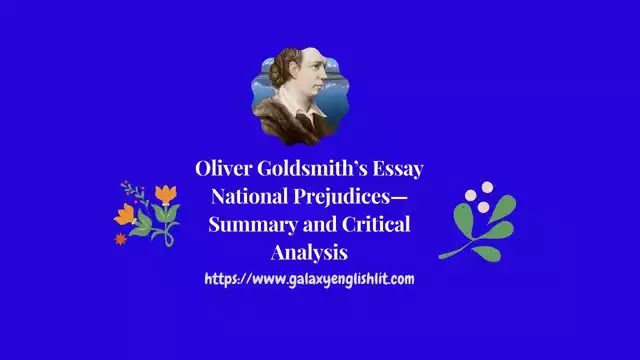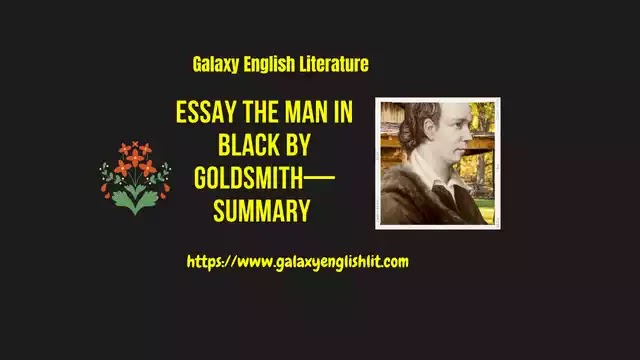Sensuousness is a characteristic quality of all Romantic poetry. The element of sensuousness is found in the poetry of Wordsworth, Coleridge, Shelley and Byron. Wordsworth has a restrained sensuousness. Coleridge would have liked to abandon himself to a life of sensations, but he stopped writing poetry because he was incapable of producing anything better. Shelley as we found him in his poetry is no less aware of the world of sensations than Keats. Byron's sensuousness bordered on sensuality. And Keats is famous, almost notorious for his sensuousness. Here, it should be remembered that woman is not only one of the objects of sensuousness; there is also the world of nature and art to which the responses of the Romantics are more acute than those of Elizabethan's or any other poets.
 |
| Keats' Popularity As A Sensuous and Romantic Poet |
Keats contrasted a life of sensations with that of thoughts. Sensation like thoughts may be both pleasant and unpleasant. Keats frequently escapes to a world of pleasant sensations as it is an ideal world for his imagination. These sensations should be intense and they ought to be sufficiently varied. The eminent Indian scholar Dr. Ram Bilas Sharma writes about Keats's sensuousness: “In this respect the Ode to a Nightingale is very typical. Keats longs for wine: he enjoys its colour in imagination, he also dreams of those handsome figures who made this wine and he hears the unheard melody of their song. The flowers, the song of the nightingale itself, the rose full of honey, the fairy captives, all cater to his different senses. Beautiful women, music, flowery trees all are present in the Ode on a Grecian Urn. In The Eve of St. Agnes, the description of the unrobed maiden against the light supposed to be projected through the multicolored window is well known. Such sensuousness is very palpable; it is this that easily catches the eye of the reader. His visual imagery seems to bring his art very close to that of a painter. He is certainly very much of a painter in words but this should not make one lose sight of certain other features of his imagery.”
Another eminent Indian scholar Dr. R. P. Tiwari remarks: “In fact, his (Keats’s) poetry is quite rich in pictorial quality. There is a plethora of tangible images - visual, auditory, olfactory, tactile and gustative. Both of kinds of imagery, visual imagery is most conspicuous.” He revels in painting a picture that is essentially sensuous:
“Light feet dark violet eyes, and parted hair.
Soft dimpled hands, white neck and creamy breast.”
And he cherishes the desire to be “pillowed upon his fairs ripening breast”. He draws a typical sensuous picture in his Endymion:
“Enchantress! tell be by this soft embrace,
By the most soft completion of thy face.
Those lips, O slippery blisses, twinkling eyes,
And by these tenderest, milky sovereignties. "
However, a salient feature of Keats's sensuousness is that it does not exclude the spiritual. In fact, the sensuous and the spiritual are different in mode only and not in kind. They merge into each other.
“Heard melodies are sweet, but those unheard
Are sweeter; therefore, ye soft pipes, play on;
Not to the sensuous ear, but more endeared,
Pipe to the spirit ditties of no tone.”
In Hyperion Keats has become inward and spiritual, but it is not unaccompanied by the sensuous. Lowel justly observes that the sensational was elevated into the typical by the control of that finer sense which underlines the senses and is the spirit of them.
In Keats's poetry we may find numerous illustrations which are related to our senses. The tongue is one of the most sensitive organs and in the case of Keats it was still more so as will be evident from the following lines of his Ode on Melancholy:
“Ay, in the very temple of delight
Veil'd Melancholy has her sovran shrine,
Though seen of none save him whose strenuous tongue
Can burst joy's grape against his palate fine.”
How acute Keats's sense of smell is can be observed in his Ode to a Nightingale. Owing to the dense foliage of the beach trees, Keats is unable to see what plants are growing there, but by smell he can guess each sweet plant or blossom that are there around him. He makes discrimination among the smell of various flowers. He can recognize that there are blossoming the thicket and the wild fruit, tree, white hawthorn and the pastoral eglantine and fast - fading violets and he can guess what soft incense hang upon the boughs in the scented darkness.
“I cannot see what flowers are at my feet,
Nor what soft incense hangs upon the boughs,
But in embalmed darkness, guess each sweet
Where with the seasonable month endows
The grass, the thicket, and the fruit - tree wild;
White hawthorn, and the pastoral eglantine;
Fast - fading violet covered up in leaves;”
Touch is another strong sense. In Keats's poetry there are not only abstract images but concrete too. The opening passage of The Eve of St. Agnes well illustrates the point,
“St Agne's Eve - Ah bitter chilld it was!
The owl, for all his feathers, was a cold;
The hare limp'd trembling through the frozen grass.”
The cold touch of the chilly January night could not have been better described. It is communicated in the language of pure poetry. Haydon tells us how Keats once “covered his tongue and throat as far as he could reach with Cayenne pepper, in order to appreciate the delicious coldness of claret.” In a letter to his sister, he expresses his desire to have “a little claret wine, cool out of cellar a mile deep”. In Ode to a Nightingale he longed for:
“A draught of vintage! that hath been
Cool'd a long age in the deep - delved earth.”





